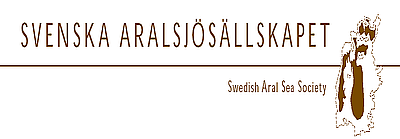10a.
Economy and ecology – a single system
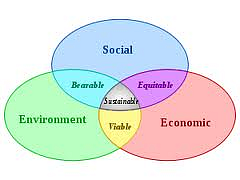 Economy is regularly defined as one of the (three) pillars, or dimensions, of sustainable development - Environmental, Social and Economic - all of which need to work to achieve a sustainable society. While environmental concerns have dominated the discussion for a long time we now see a change. Increasingly the language of sustainability comes closer to that spoken by politicians and businessmen. People start to realize that environmental issues need to be seen in a much broader perspective than before. They are not just a matter of environmental protection, but also a matter of long-term economic strategies. Below we will illustrate how economy is connected to environmental development but also how it influences the social situation of a country.
Economy is regularly defined as one of the (three) pillars, or dimensions, of sustainable development - Environmental, Social and Economic - all of which need to work to achieve a sustainable society. While environmental concerns have dominated the discussion for a long time we now see a change. Increasingly the language of sustainability comes closer to that spoken by politicians and businessmen. People start to realize that environmental issues need to be seen in a much broader perspective than before. They are not just a matter of environmental protection, but also a matter of long-term economic strategies. Below we will illustrate how economy is connected to environmental development but also how it influences the social situation of a country.
The science of ecological economics attempts to study economy, the environment and natural resources together. It is obvious that economy depends on natural resources and those in turn depends on how the economy - e.g. forestry or agriculture or industrial production, which may lead to pollution - is conducted. Society, economy and nature together form a single system, in which all components influence each other.
Many environmental goods are traded on a market just as any other goods. Timber, agricultural products, mined metals and fossil resources are traded and have prices, and are thus part of the normal economy. When this trade have negative effects, which are not paid for - it may be both environmental and social negative effects - these are called externalities. Typical externalities include pollution by factories, roads that intrude in the landscape, and carbon dioxide emissions from transport e.g. air traffic. Pollution may decrease the health of the people leading to higher medical costs, or reduce the production of nature and thus lower the income from forests, fields and the sea.
When the price of a product does not represent its true costs we have a market failure. Market economy does not automatically take care of the environmental costs of the economy. In fact it never does as “free” ecosystems services are supporting all activities in the system Nature-Economy. The value of all ecosystems services on Earth has been estimated and the result is much larger than the value of the total economy, that is, the world Gross Domestic Product, GDP.
One way to deal with this is that the State introduces an environmental tax. In this way an externality may be included or even avoided, for example when a factory finds it economically better to develop a production without pollution. The State may also use the tax money to restore the environment, for example when a tax on e.g. emissions of air pollutants such as SOx is used for the liming of acidified lakes.
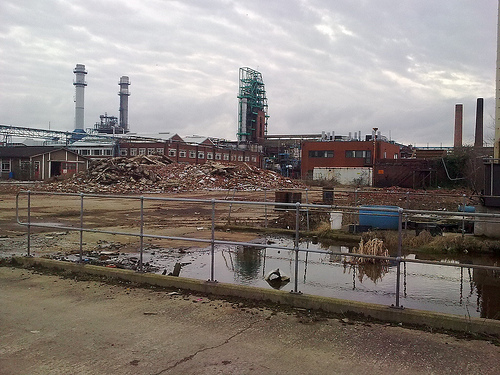 An environmental tax that makes the polluter pay at least some of the cost of polluting, is fulfilling the so-called Polluters Pay Principle, meaning that those who pollute should pay for the damage caused, most typically for the cost of remediation. In real life it is often difficult or impossible to find the polluter, e.g. when a country is hit by acid rain. Instead too often it is the victim who pays. Today we are fighting to remedy quite much of the consequences of earlier environmental sins, e.g. by remediation of brown fields. Those are much polluted earlier industrial areas, which are often extremely expensive to clean up. This is the environmental debt of earlier generations.
An environmental tax that makes the polluter pay at least some of the cost of polluting, is fulfilling the so-called Polluters Pay Principle, meaning that those who pollute should pay for the damage caused, most typically for the cost of remediation. In real life it is often difficult or impossible to find the polluter, e.g. when a country is hit by acid rain. Instead too often it is the victim who pays. Today we are fighting to remedy quite much of the consequences of earlier environmental sins, e.g. by remediation of brown fields. Those are much polluted earlier industrial areas, which are often extremely expensive to clean up. This is the environmental debt of earlier generations.
But what about environmental goods and services which are never sold and bought on a market? Can they be given a price? Sometimes a price can be calculated as an indirect cost. Thus the prices of all properties at the shore of a sea before and after it has been polluted reflects the price of a clean sea. In absence of a market price one may simply ask people what they are willing to pay (willingness to pay, WTP method), for example for the possibility to pick mushrooms in the forest, or to be able to swim in a nearby lake.
There are also services, which do not have a price, that are priceless, such as the beauty of a mountain range or the existence of the biodiversity of a coral reef, they have existence value. It is also obvious that monetary methods have limits. We have to preserve the basis for our lives regardless of what the market says. “When the last tree is cut, the last fish is eaten, it will be obvious that we cannot eat money.”
When asking who owns the environment, the answer above is “the state”, as the state is able to collect environmental tax. Sometimes this does not apply. The World’s Oceans for example do not have an owner in this sense. Therefore fishing fleets may harvest as much fish as they can, not to let someone else do it. As a consequence the resource is partly or completely destroyed, a reality of today’s ocean fishing. This is called the tragedy of the commons. An unregulated common resource is at danger. We see national states regulating their common resources, and some international regulations, e.g. fishing within the European Union waters, but the so called global commons – Antarctica, the oceans, the atmosphere - are in danger. Global warming can be seen as the failure to regulate the use of the atmosphere as a recipient for greenhouse gases.
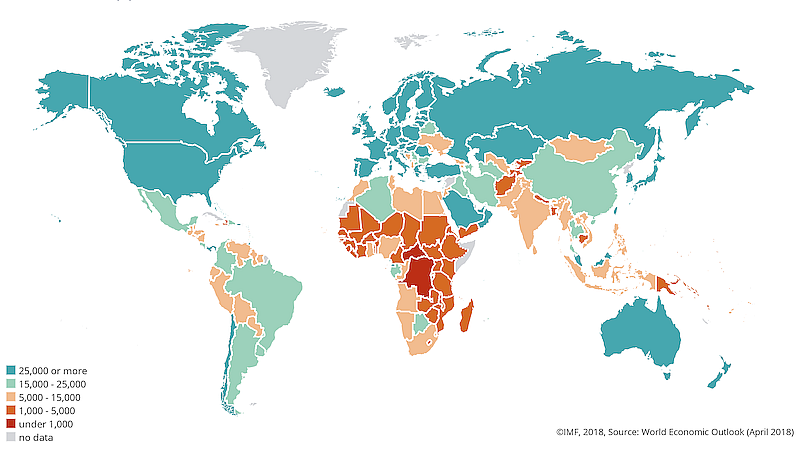
The environment is thus valuable, but where is the wealth of nations? The collected value of all goods and services sold and bought in a nation is traditionally expressed as Gross National Product, GNP. The weakness is that it includes transactions, which are not understood as wealth, such as health services, and excludes others, which are percieved as wealth, such as natural resources. These are included in a green GNP and green budgets. The absolute value of a green GNP is not possible to establish. The large value of working with a green budget or green GNP is rather to follow the changes from one year to the next. Green budgets include traditional statistics (production values, processing value, employment), but also adds positive items (energy as biomass etc, and natural resources such as forests, fisheries etc) and subtract negative ones, such as emissions. The World Bank, which in this way has reported on the wealth of nations, emphasise the importance of agriculture, especially in the developing world.
But equally important as the wealth of nations is the distribution of wealth. The economic inequity between, as well as within, countries has typically increased since the 1970s. Large income inequalities are by many considered a problem as serious as the environmental crisis. A country with large personal income inequalities has larger problems in medical and psychological health, crime, gender equity, social trust etc. In Europe a key task for the welfare state is to function as a huge re-distributor of income to reduce inequity by collecting taxes and supporting those without income. (See further Chapter 10c).
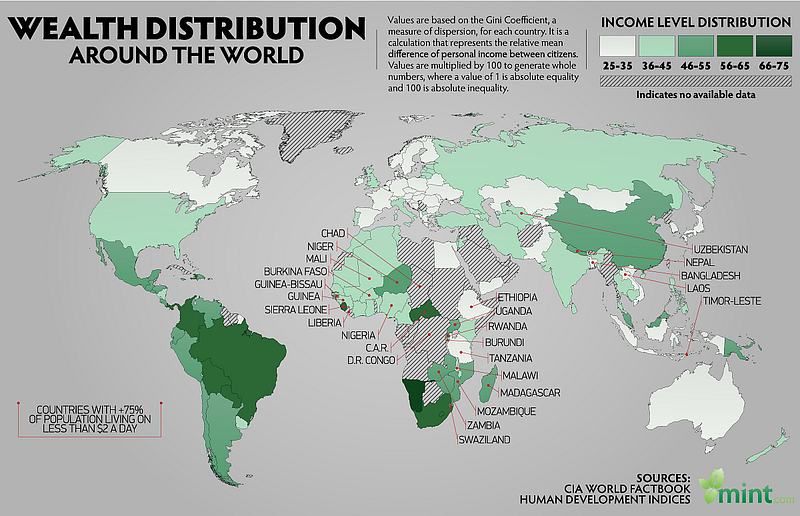
We see that many countries, especially in Asia, which a generation back was considered developing or underdeveloped, are today counted as middle-income states. Especially in Asia the economic development has been dramatic. Still there are a number of countries, most of them in Africa, with enormous poverty. The redistribution of economic means to these through e.g. loans, development support etc., is minimal compared to for example international trade or military budgets. The United Nations asked the countries of the world to address this question in the Millennium Development Goals adopted by the General Assembly in year 2000 to be reached by 2015. Reducing poverty is one of the goals; it will be met by the target year. It will help to meet a number of other key development goals both social (child survival, education, population growth) and environmental (food production, resource use and environmental impact).
One finally needs to reflect on the meaning of economy. Money is there not for its own sake, but rather as a mean to achieve welfare and a good life. Is there enough for us to share (equity within the existing generation) and save for the coming generations (equity between generations)?
Materials for session 10a
Basic level
- Study Environmental Science, chapter 19, pages 569 - 574: Basics of Ecological Economics.
- Study Environmental Science, chapter 19, pages 574 - 579: Cost of Environmental Impact and Green Budgets.
- Study Environmental Science, chapter 19, pages 583 - 589: Environmental Taxes.
Medium level (widening)
- Study how to perform Green Accounting, by Geir B. Asheim.
- Learn about different measure of economic standard (e.g. GDP/Capita), wealth distribution (Gini coefficient or quintiles)
- Read about the book The Spirit Level on social consequence of unequal distribution of wealth
- Study distribution of wealth in your own country.
- Watch the presentation by Elinor Ostrom on Tragedy of the Commons.
- Read Raymond De Young’s Tragedy of the Commons, Adaptive Muddling and Durable Behaviour: Bringing out the best in people faced with difficult environmental circumstances.
- Hans Rosling: New insights on poverty.
Advanced level (deepening)
- Read Environmental Science, chapter 19, pages 569 - 589: The Cost of Pollution - Environmental Economics.
- Study The Sustainable Development Goals; Find out what they are and how far they are from being reached. On the UNDP web site (first). On the Sustainable Development Goals (SDG) homepage (second).
- Study the World Bank report Where is the Wealth of Nations. Find out how it is calculated and look up your own country in the tables in the back.
- Read Chapters 9 and 10, pages 1- 47 in: Branko Milanovic (2005), Worlds Apart: Measuring Global and International Inequality.
References
Milanovic, B. 2005. Worlds Apart: Measuring International and Global Inequality. Princetone University Press.
Rydén, L., Migula, P. and M. Andersson (eds). 2003. Environmental Science - understanding, protecting and managing the environment in the Baltic Sea region. Baltic University Press. Uppsala, Sweden.
Wilkinson, R. G. and Pickett, K. 2009. The Spirit Level: Why More Equal Societies Almost Always Do Better. Allen Lane.
World Bank. 2005. Where Is the Wealth of Nations? Measuring Capital for the XXI Century. The International Bank for Reconstruction and Development / The World Bank, Washington, D.C.
Zylicz, T. (ed.). 1977. A Sustainable Baltic Region. Session 8, pp. 23-29. Baltic University Press. Uppsala, Sweden.
BUP Sustainable Development Course
